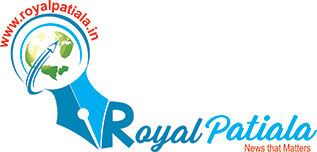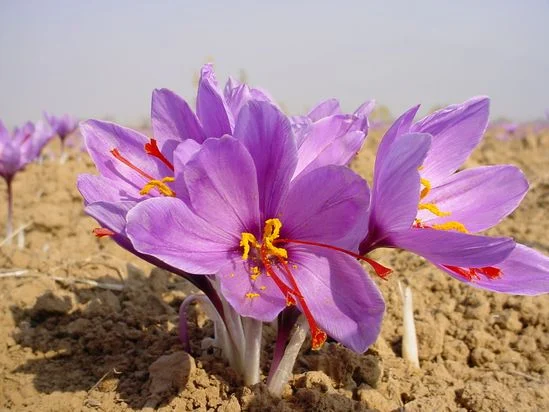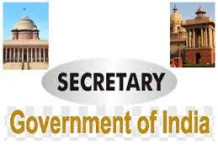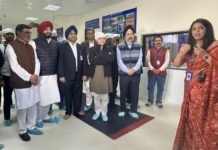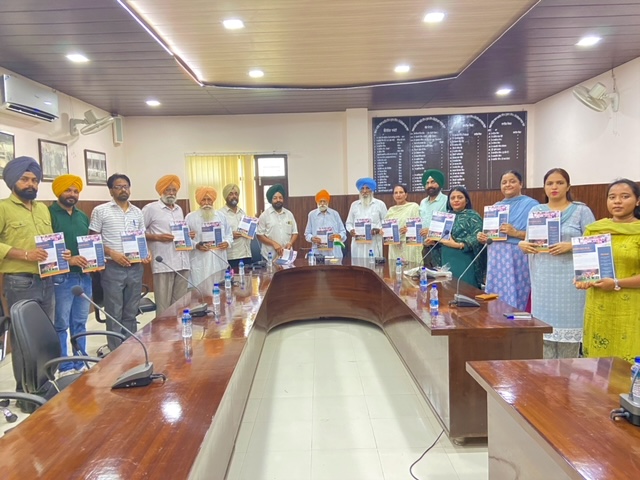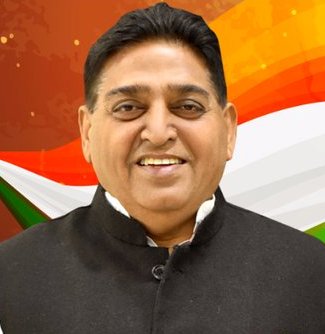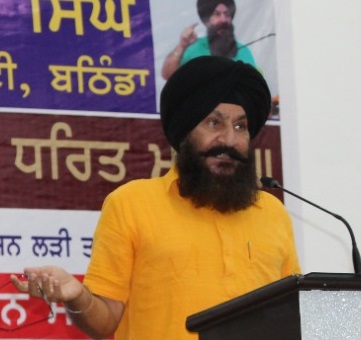Saffron- the “Red Gold’ of Kashmir; With GI tagging, Kashmiri Saffron touches new heights- Hanief
Mohammad Hanief
The name Saffron has its origins in the Arabic word zafaran which means yellow. Botanically, wild saffron is known as Crocus cartwrightianus, while the commercially cultivated saffron is botanically called Crocus sativus, which is also the name of the flower. One of the most expensive spices in the world, saffron is also referred to as “Red Gold”. Its history spans over more than 3500 years. The Romans used it as a deodorizer, the Egyptian healers used it to treat gastrointestinal ailments and it is said that Cleopatra used saffron for cosmetic value. Saffron crocus has been predominantly cultivated in Iran and Kashmir. A very labour intensive crop, Saffron is a highly coveted spice and is often considered to be more valuable than gold!
It is a spice that comes from the stigmas of the purple flowers of the plant Crocus sativus. Each flower contains three stigmas that are handpicked and then dried to make the saffron spice. It takes thousands of flowers to produce a few grams of saffron. The stigmas are typically of an orange-red colour, which is due to the content of crocetin, a type of acid and crocin. While buying saffron, it is important to keep in mind that the best kind of saffron has a deep red colour, a honey-like aroma with a delicate but musky taste.
It is late autumn in Kashmir, and villagers around Pampore – also known as the saffron town of Kashmir in Pulwama district of Jammu and Kashmir are picking the delicate flowers to fill their wicker baskets. Kashmir’s saffron (Crocus Sativus Kashmirianus), known for its flavour and colour, is harvested just once a year from late October till mid November.
Out of total 5,707 hectares of land under saffron cultivation in Kashmir, more than 90 per cent is in Pampore tehsil of Pulwama district in South Kashmir while the rest is in central Kashmir’s Budgam and Srinagar districts. Known for its special aroma, saffron is a powerful flavouring and colouring agent.
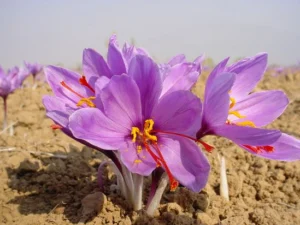
Owing to its long and dark red hues, Kashmiri saffron is regarded as the best variety of saffron available in the market. High-quality and pure saffron can always be recognized by the unique aroma and features of the stigmas it contains. Best Quality Raw and Organic Natural Kashmiri Saffron (Kesar).
The three components of each flower—petals, yellow strands, and red threads—are arranged in order of importance. Pure saffron is extracted from the red strands. More than 1,50,000 flowers are sifted and scanned for a kilogram of the crimson spice. After this, the strands are dried over a charcoal fire. Saffron, one of the most expensive spices in the world, is also referred to as the “crop of gold”.
After suffering losses for years, finally there is good news for saffron producers of Kashmir with a yield of 15.04 metric tonnes (MTs) of prized spice in 2021. Earlier, the highest production was recorded in 1996 when the yield hit 15 MTs.
In the past saffron was cultivated on large scale land in rural areas of district Pulwama. However, due to different constraints in saffron cultivation, growers shifted to other horticultural crops and today the saffron crop is confined to the Pampore and its adjacent areas. Over the past two decades the production of saffron drastically declined by 68 percent and the growers feel devastated for this poor production.
In the past 10 years, the low yield has become a deterrent for farmers and many of them have already shifted to other high yielding crops like apples and walnuts. The area under saffron cultivation has shrunk at a fast pace from around 5,707 hectares in 1996 to 3,875 hectares in 2010-11.
Planting is done in July, August and September either by hand or by machine, and harvesting comes at the end of October to mid-November, roughly eight weeks after planting. Saffron crocuses are sun-worshipping plants so they love to be planted in the dry open fields rather than in the shade.
Pampore meadows attract tourists from everywhere to witness the yellow, marron, and purple hues of the blossoms that bloom beside giant chinars and harvest time resembles a festival for villages in the area. On the first day of the harvest, saffron farmers head to the shrine of Hazrat Sheikh Sharif-ud-Din in Namblabal Pampore to offer some saffron.
These fragrant red strands have even featured in the poems and songs of the 16th-century poet Habba Khatoon. Known as the Nightingale of Kashmir, Khatoon hailed from Pampore.
This spice is known by various names in India, including zafran in Urdu, kesar in Hindi, kong posh in Kashmiri, and kungumapoo in Tamil. Saffron is used in different ways. There’s kahwa – the green tea laced with saffron from Kashmir. Beloved by many, it will make you fall in love with it at one sip. With spices like cardamom and cinnamon, this elixir is slowly brewed in a copper samovar. It is then served with a touch of honey and often garnished with almonds. It is also an important part of wazwan, the lavish Kashmiri supper platter.
Saffron is used in cooking, but it also offers many health advantages. The oil from which safranal is produced reduces growth in cancer cells and functions as an anticonvulsant and antidepressant. The carotenoid alfa-crocin also has a similar effect. Minerals are also abundant in it, including potassium, manganese, iron, calcium, selenium, copper, zinc, and magnesium. Additionally, it is high in folic acid, niacin, riboflavin, and vitamins A and C.

Every year, the government of Jammu and Kashmir organises a three-day Saffron Festival with cultural events. Held from the last week of October, it gives tourists a chance to see saffron fields and buy the spice directly from producers.
Kashmiri saffron was given a geographical indication tag by the geographical indications registry. The request was filed by the Directorate of Agriculture, Government of Jammu and Kashmir, and facilitated by the Sher-e-Kashmir University of Agriculture Sciences and Technology, Kashmir, and Saffron Research Station, Dussu (Pampore) with the aim to make it illegal for someone outside the valley to make and sell a similar product under the “Kashmiri saffron” name.
According to reports, Iran is currently the largest producer of saffron. It cultivates 300 tonnes of saffron every year. After the arrival of Iranian saffron, the price of Kashmiri saffron has halved since 2007. Today Iran produces 80 to 90 per cent of the world’s saffron. Kashmiri saffron had a negative effect due to the arrival of adulterated saffron by Iran in the market.
However, despite all the difficulties and tribulations, the saffron business still employs thousands of people in Kashmir. The government is taking several steps to resurrect the sector and restore it to its former glory. The central government has started the National Saffron Mission in 2010 to revive the valley’s production of the most costly spice in the world.

(The author is a regular columnist and can be mailed at [email protected])
November 23,2022
